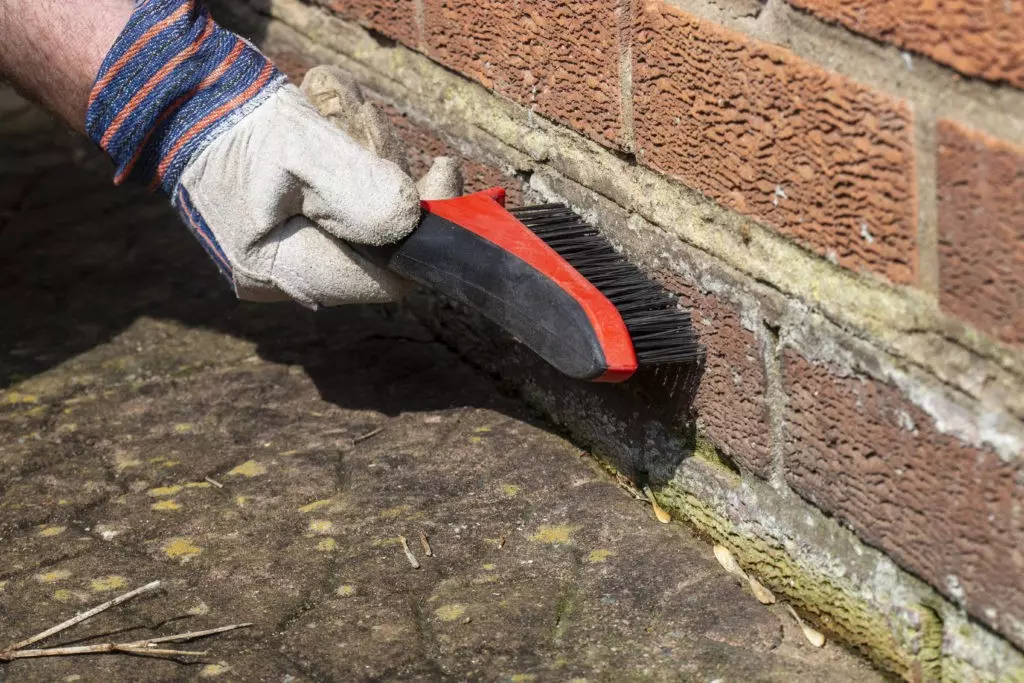Crimson Creek | Hebron Brick
Should you use EIFS or brick in your next construction project? Discover the pros and cons of each, as well as where to find high-quality materials and expert advice on cladding.
EIFS cladding has something of a mixed reputation.
If you ask people in New Zealand or in western Canada? They’ll likely link EIFS to the leaky homes and leaky condos crises that wreaked havoc in their countries. Crises that caused damages in the billions and that are still causing issues to this day.
But in other parts of the world, EIFS is an extremely popular and energy efficient building material. It’s also considered a highly desirable alternative to brick. Just as beautiful, but quicker and more cost-effective to install.

Low-rise residential building undergoing repairs to correct apparent “leaky condo syndrome” in Vancouver’s West Point Grey neighborhood, 2014.
So, what’s the truth about EIFS? Is it a leaky liability waiting to happen? Or is it really a better choice than brick?
To answer these questions, let’s break down the pros and cons of both EIFS and brick.
What Is EIFS?
EIFS is the acronym for Exterior Insulation Finishing Systems. It consists of a few key elements.
The first is an insulation board attached to the building substrate. The board is then covered with a reinforced base coat and finished with a textured protective coat. The result is a lightweight synthetic cladding that wraps around a building, offering both functional and aesthetic appeal.

“EIFS” synthetic stucco, short for Exterior Insulation and Finish System.
Pros and Cons of EIFS Cladding

EIFS Installation | ArchDaily
Let’s start with the upside of EIFS.
Pros of EIFS
- It saves money upfront.
EIFS is cheaper to build with than brick, both in material and installation costs. It also boasts two to three times the insulating power of brick, which can lead to big savings on monthly energy bills.
Those numbers may seem to make EIFS the obvious choice for cost-conscious builders. However, it’s important to put those initial cost savings into context. Because EIFS can come with significant long-term costs, especially when it comes to maintenance and repairs.
Cons of EIFS
It requires commitment.
EIFS is not a generic term for a method of construction. Different EIFS manufacturers have their own proprietary systems, so materials from different brands can’t be mixed and matched. When you choose EIFS, you have to stick with one manufacturer. Both during the initial build and when making repairs years down the line.It can lead to water leakage and rot.
EIFS cladding is marketed as being highly water-resistant. But that’s only part of the story. While it’s true that EIFS stops water getting in, it also stops water getting out. Which is exactly what happened to thousands of properties in British Columbia and New Zealand. Water seeped in due to surface cracks and improper installation of EIFS, then caused extremely costly rot and deterioration.It is easily damaged.
While EIFS has an attractive exterior, its soft outer material chips and cracks easily. It’s also easy to mark up, which makes it a target for vandalism.It can be tricky or impossible to insure.
Because of the issues noted above, insurance costs may be higher for buildings with EIFS. In some cases, they can’t be insured at all.
Pros and Cons of Brick
This time, let’s switch it up and start with the cons associated with brick.
Cons of Brick
- It requires an upfront investment.
No doubt about it: brick costs more in the short term. The price of material and installation can be as much as 30 to 50 percent higher than EIFS.However, it’s important to remember that building with brick is a craft. It involves quality product and time-honoured techniques. Neither of which comes cheap. But that initial investment in brick? Pays for itself…and pretty quickly, too. Let’s look at how.
Pros of Brick
It has natural drainage.
Brick masonry has built-in protections against water damage. Properly joined brick and mortar naturally minimizes water penetration, while solid brick walls are able to absorb water from their sheer mass.It’s versatile.
From traditional and rustic to sleek and modern, brick design options are endless. For instance, this modernized fire house owes its striking new look to metallic black brick. Another example is this revitalized commercial building, which features a beautiful glazed brick facade with blue undertones.It offers long-term value.
Brick just gets better with time. It stands up to wear and tear, even in harsh environments. It requires little to no upkeep. But perhaps the best evidence is this. Brick structures built centuries ago are still standing today. EIFS is only a few decades old and it’s already caused major crises in the construction world.
The Bottom Line: Brick or EIFS?
While EIFS has convenience and short-term savings on its side, the cons ultimately outweigh the pros. For lasting value and visual appeal, brick can’t be beat.
Not sure where to start with brick? I-XL Building Products has one of Canada’s widest selections of brick products, along with experienced staff who can answer your questions and help get your project off the ground. Browse brick products by brand, colour, and type. Or get in touch for a free quote today.








